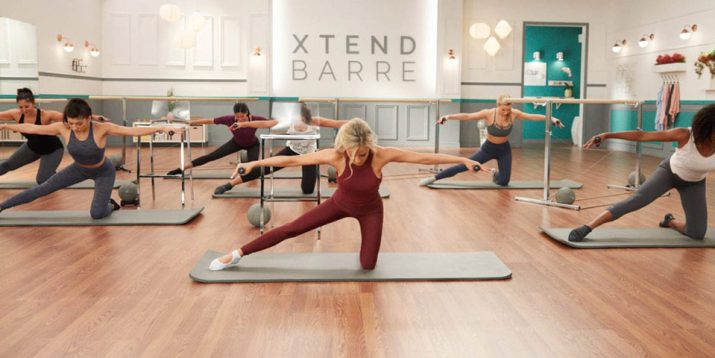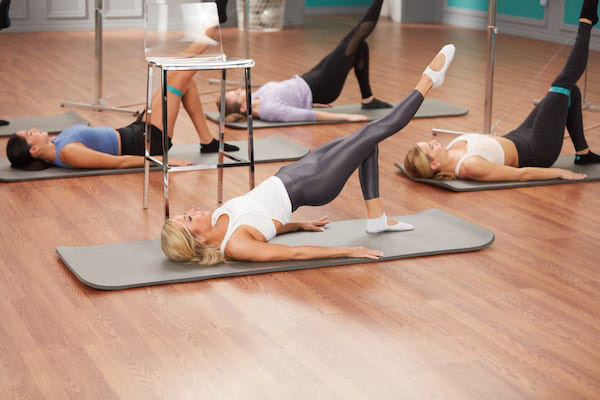Should I Do Xtend Barre if I Have Bad Knees?

While some types of exercise are off-limits when you have “bad knees,” Xtend Barre is a low-impact program that builds on a foundation of dance and Pilates to build strength and mobility from head to toe.
That translates into “real world” fitness that can help you and your knees throughout your entire day.
“In general, barre exercises are often incredibly gentle on the joints, including the knees,” says Andrea Rogers, creator of the Xtend Barre program. “Because of that, they’re a really good choice for the knees.”
Andrea shares her expert tips for getting the most out of your barre workouts while keeping your knees safe.
Can I Do Xtend Barre if I Have Bad Knees?
If you have “bad knees” or any other type of physical restriction or injury, consult your doctor before beginning any fitness program, including Xtend Barre.
That said, Xtend Barre is low-impact, meaning it’s easy on your joints.
Plus, barre workouts can help reduce your risk of injury by enhancing mobility and building strength throughout your body, including in the smaller, stabilizing muscles that support your knees.
“We’ve seen in our groups that people who have knee issues — some who say they can’t do any other type of workout comfortably — have found success with barre,” she says. “That comes with time and consistency and strong, form-focused movement.”
Whether it’s your first barre class or your 50th, Andrea will constantly remind you to keep an eye on your form and alignment, and she offers modifications to keep you safe while still gaining strength, flexibility, and confidence.
How to Make Xtend Barre Even Easier on Knees

Curious about Andrea’s workouts, but need a little more TLC for your joints? Here are six ways to make Xtend Barre even easier on your knees.
1. Focus on form and alignment
You’ll get plenty of reminders from Andrea throughout your 30-minute workouts.
She urges you to pay more attention to how you’re holding your body and how your joints are aligned than trying to complete a certain number of reps.
No matter how low you go, think about keeping your hip, knee, and foot lined up, she says.
2. Perfect your pliés
Your “perfect” plié doesn’t have to be a deep one, Andrea says. It just has to exhibit good form.
- Open your legs from your hips, not your knees. The outward rotation should come from your thigh bones turning outward from your hip sockets — your knees should never rotate. (Remember: Your hip is a ball-and-socket joint designed for multi-directional movement and rotation, while your knee is a hinge designed for movement in a single plane.)
- Keep your knees tracking over the center of each foot, ideally lined up with your second or third toes.
- Don’t let your knee wobble in and out (toward your big toe or pinky toe).
- Go only as low as feels comfortable, with control.
3. Make your moves smaller
If you feel any discomfort or struggle to execute the move properly, adjust your form (e.g., by not turning your legs out quite as widely or by not sinking as far into the movement) to reduce the strain on your body.
The key is to find your “challenge zone” where you’re giving it your all but still staying safe and working within the range of motion that’s right for you, says Andrea.
4. Slow down
Simply slowing down the tempo of your movements can help, too, Andrea says. Rushing through the exercises won’t build more strength — but it can strain your joints.
5. Change your “turnout”
You’ll hear this term often in barre classes, and it refers to the external rotation of your femurs in your hip sockets.
If you have knee issues, ask your doctor what’s right for you, Andrea suggests. Or simply adjust your stance until you feel comfortable.
“Some individuals perform better with larger external rotation of the hips,” she says, with feet pointed at a wider angle.
Others feel better with their legs and feet closer to parallel.
6. Skip the jumps
Xtend Barre does include some challenging movements, including optional ballet jumps.
But Andrea says you can still get an awesome workout even if you skip those.
“Eliminating the ballet jumps can be easier on your knees,” she says.
